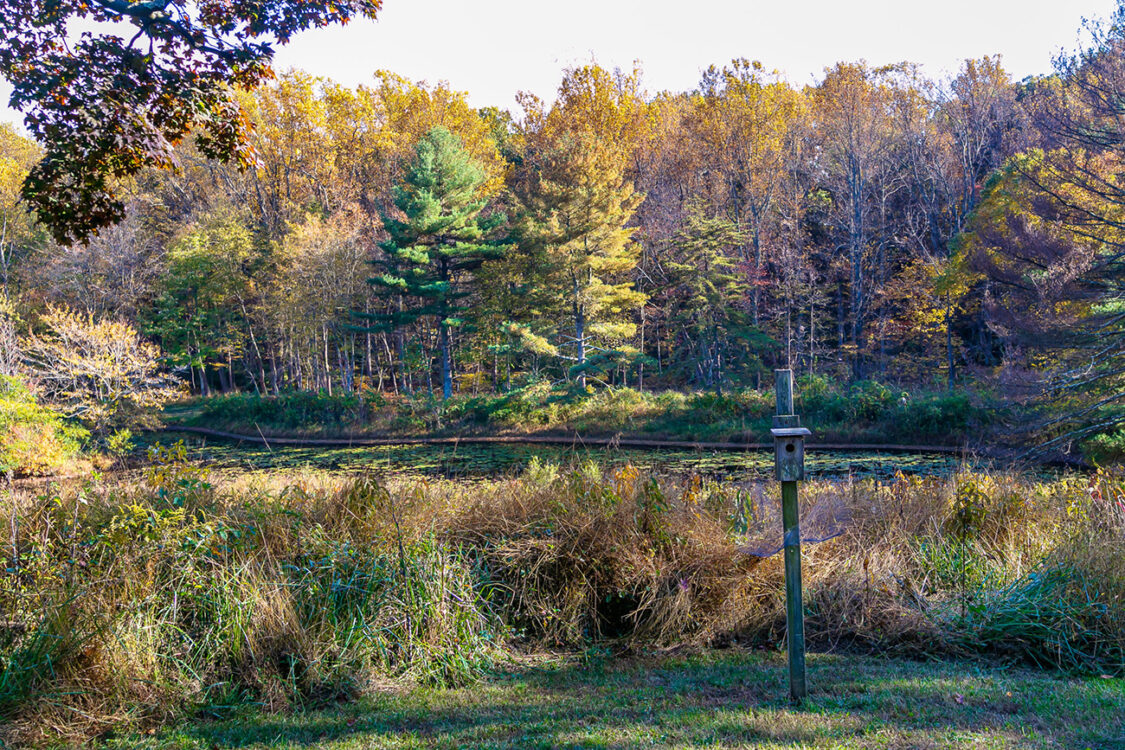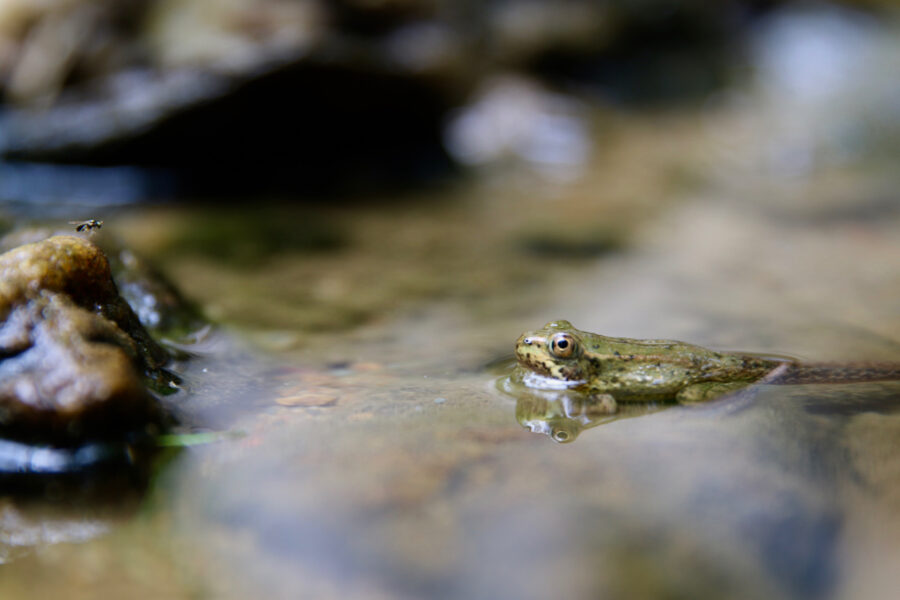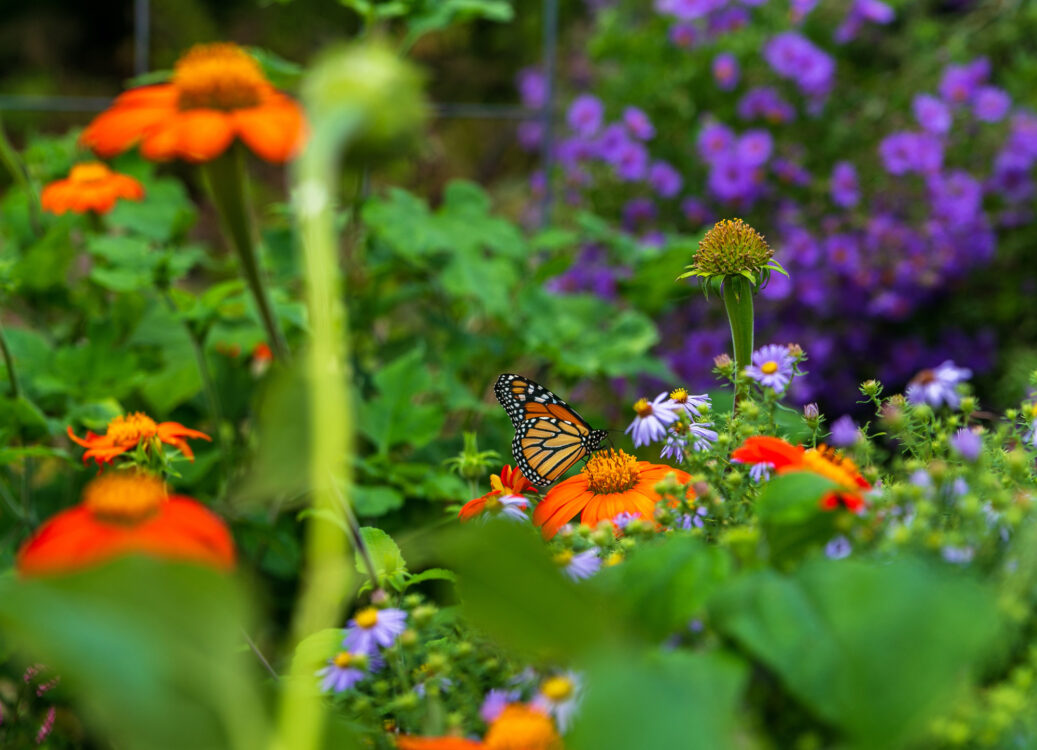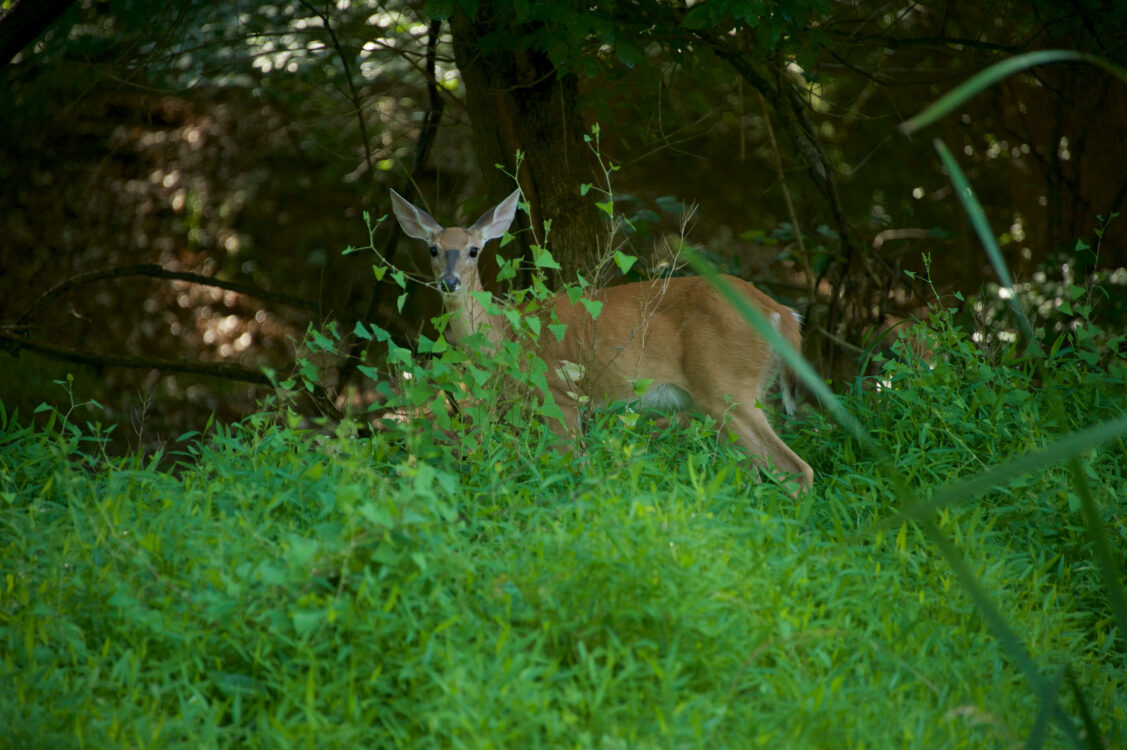Natural Spaces
Despite urbanization, Montgomery County has a wealth of natural areas that provide refuge for wild species and respite for park patrons. Parks staff preserve these spaces so that common and rare species of animals and plants may thrive, and all of us can enjoy the natural beauty of our region for generations to come. The natural resources of Montgomery County include unique geology and soils, streams, wetlands, woodlands, and meadows. These resources support a variety of ecological communities and form the backbone of our park system.
Vegetation and Wildlife Habitat
Terrestrial resources include the flora (plants) and fauna (wildlife) that live among us in the County’s Park system. A healthy and vibrant Park system is dependent upon a healthy and diverse plant community. Vegetation Management Staff preserves unique and valuable habitats as well as rare and endangered plant species while battling the negative effects of non-native invasive plants (NNIs). Strategies to support this preservation include identification and acquisition of important natural resources; Best Natural Areas and Biodiversity Areas management; afforestation/reforestation and habitat restoration; native plant propagation; non-native plant management; the Weed Warrior volunteer program; and white-tailed deer, nuisance wildlife management, and artificial habitat programs.
Native Plant Program
Natural Spaces programs and projects in Montgomery Parks rely on native plants to ensure the habitats they protect are authentic, sustainable, and function as intended. The Native Plant Program, housed at the Pope Farm Plant Production facility has, since 2012, produced plants for Parks that are native and locally sourced to support the continued viability of Montgomery County’s environment.
Meadow Management
Parks staff manage and restore meadows to protect these natural habitats and ensure native plants, insects, birds, and mammals can flourish. If these areas are not managed, they would revert to forest or be overrun by non-native invasive plants, and eventually, native plants and animals would be eradicated from the area. Learn more about meadow management and current restoration projects.
Prescribed Fire
The prescribed fire program is the identification of habitats appropriate for the use of prescribed fire, it is currently carried out with the assistance of the Maryland Department of Natural Resources, Forest Service.
Wildlife Management
Wildlife is managed for public safety, regulatory compliance, biodiversity, and sustainability, and all in accordance with human land uses and priorities.
Water Resources
Aquatic resources in the County include fish, amphibians, reptiles, benthic macroinvertebrates (small insects and other creek dwellers), and the water bodies where they reside. Parks staff manage the County’s aquatic resources by:
- Conducting stream monitoring
- Tracking water quality
- Administering the Department’s National Pollutant Discharge Elimination System (NPDES) Permit
- Employing stormwater management and stream restoration techniques
- Reviewing concept plans to minimize impacts to Parkland.
Learn more about how we care for aquatic resources on our Water Quality Information page.
Nature Centers
The future success of our stewardship efforts depends on an engaged community that understands the impact of human actions on the environment and that is committed to supporting conservation activities in their own lives and throughout our community. To find out more about how you can become involved, visit one of Montgomery Parks’ nature centers.




